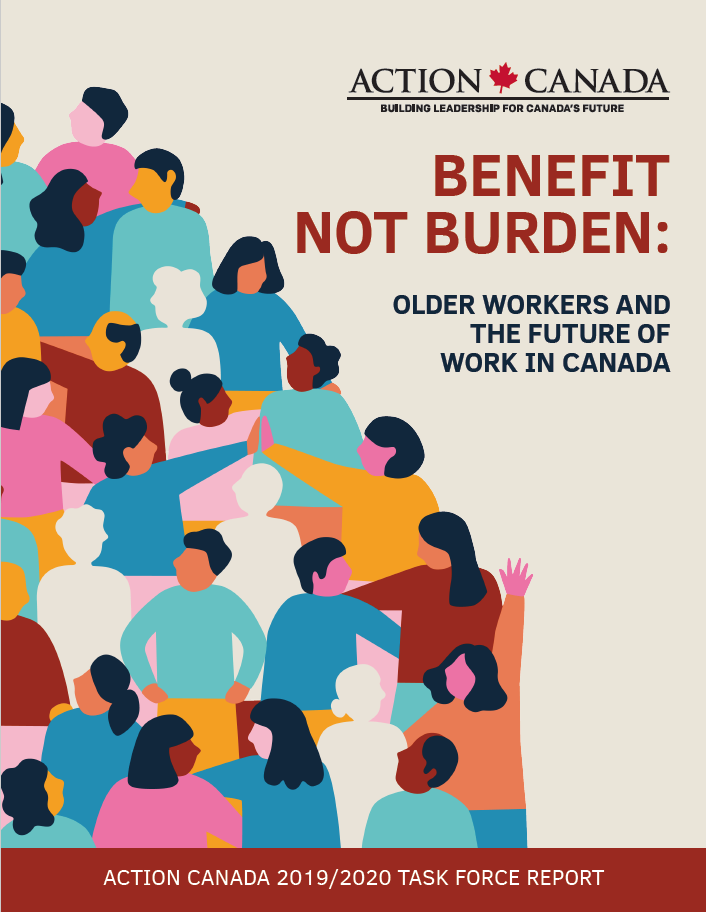
Benefit not Burden: Older workers and the future of work in Canada
An Action Canada Task Force reportExecutive Summary
When you stop being involved in your community, you stop living. I’ve always worked. I want to continue to work.” — Madeline Myers, Owner and Operator, Solar Plus 101
Aging and the Future of Work
When you envision the future of work, Madeline Myers is not the first person to come to mind: a 73-year-old who owns and operates a small business in the energy sector, based in rural Nova Scotia. More often, the future of work conjures up images of millennials on computers working from coffee shops and robots operating on factory floors. But Myers’ story — that of an older adult launching and running a business, changing directions in their career, or continuing to be a leader in their workplace — is an essential component of the future of work in Canada.
Artificial intelligence, automation, increasing reliance on contract labour and climate change are altering the type of work done by Canadians. But Canadians themselves are changing, too. Canada is one of a growing number of countries managing a significantly aging population. In the mid-1990s, nearly six million Canadians were over the age of 55; by 2016, this number reached 11 million. According to Statistics Canada, by 2036, 17 million Canadians — about half the population — will be 55 years or older.
This report is about the future of work and how building an inclusive, resilient economic future requires a critical look at how we understand and value older workers. We evaluate both the economic and social benefits of ensuring Canadians are gainfully employed for as long as they choose to be.
For the purpose of this report, older worker refers to those aged 55 and older. We acknowledge that homogenizing this group runs the risk of erasing unique experiences, barriers and intentions older workers have and face. Ageism does not impact everyone equally; it intersects with other forms of discrimination such as racism and sexism. For this reason, this report encourages the audience to reflect on how the diversity of older workers must inform anti-ageist public policy and employment strategies.
We recommend the federal government lead the way by:
- Setting a target of 75 percent for an older adult employment rate.
- Reframing the way government talks about — and the value it places on — older workers.
- Not developing an Older Worker Labour Strategy.
- Raising the rate of retirement to 67 from 65.
- Implementing policies that encourage flexible work.
When it comes to making these changes, we recommend the federal government take an anti-ageist approach by:
- Having conversations about age and ageism in the workplace with employees.
- Having a specialist in anti-ageist approach deliver training to policy- or decision-makers in the workplace.
- Reviewing existing internal policy and practice with an age-based lens.
Taken together, these recommendations will build a strong, stable resilient economy to help Canadians thrive and grow — no matter how old they are or what they look like.
Watch the presentation from March 13, 2020:
Thank you to Action Canada’s partners:
 |
 |
 |








